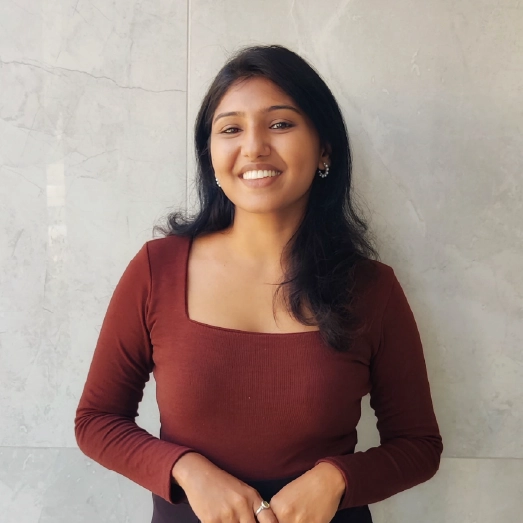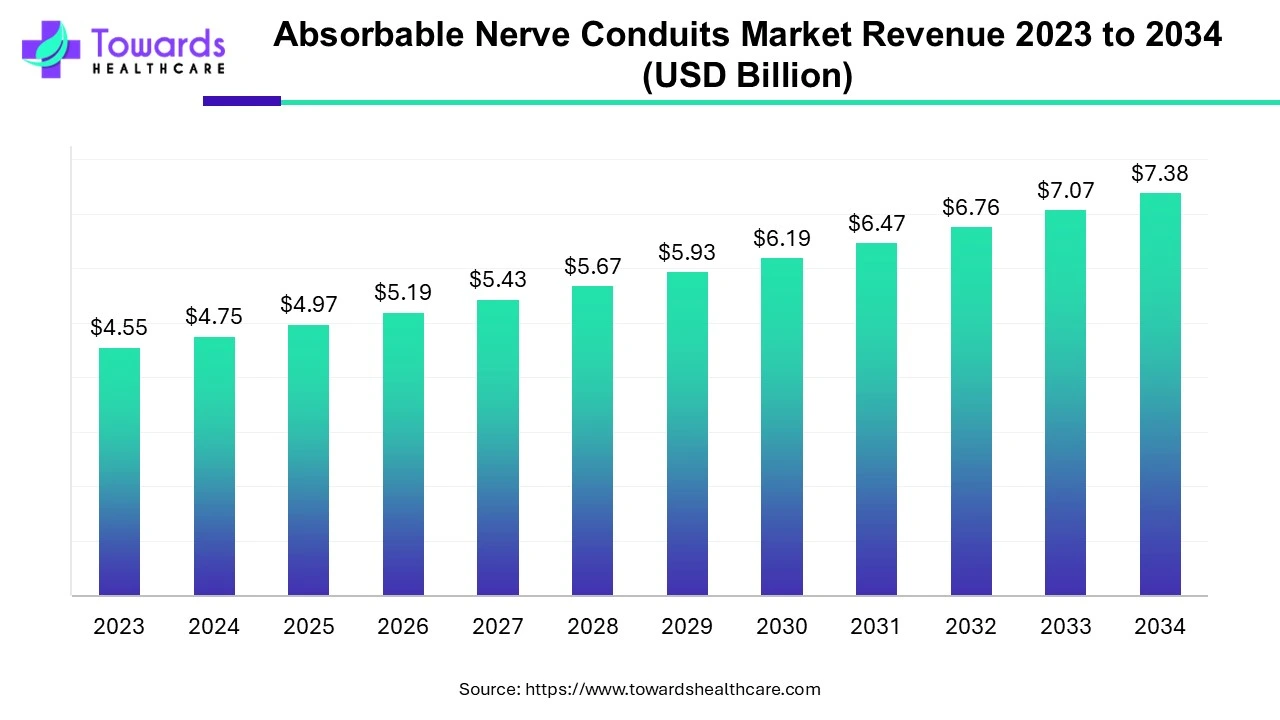November 2024


Principal Consultant

Reviewed By
The global absorbable nerve conduits market was estimated at US$ 4.55 billion in 2023 and is projected to grow to US$ 7.38 billion by 2034, rising at a compound annual growth rate (CAGR) of 4.5% from 2024 to 2034. The increasing demand to repair peripheral nerve defects with an alternative to autograft, which also provides faster regeneration has resulted in rising adoption of absorbable nerve conduits and boosting the market growth.

The bioabsorbable nerve conduit is an elastic tubular structure exhibiting axonal growth and provides flexible easy handling, designed with specialised material that dissolves into the body to repair the nerve. The procedure does not hamper the intact nerve. The design of bioabsorbable nerve conduit encompasses two layers, the outer layer is made of poly L-lactide (PLA) multifilament fibre mesh and the inner layer is made of 50% PLA and 50% polycaprolactone (PCL) porous sponge. The combination together has the best compatible and toughening effect.
The proliferating technological advancement is resulting in the development and innovative products launched in the industry. The incorporation of 3D structure and topographical modification enhances the treatment of nerve repair by providing better support and directionally guiding the regenerating axons and Schwann cells.
A commonly known clinical trial, Neura Gen, a biocompatible, semi-permeable absorbable Type 1 collagen tube 3D nerve guide which provides a protective environment across nerve growth. Additionally, conduit filler takes nerve repair one step ahead by creating a more natural and biologically friendly environment. National polymers such as fibrin, laminin, collagen and agarose and synthetic polymers such as polyamide and PGA are some commonly noticed fillers.
The major restraining factor for absorbable nerve conduit market is slow recovery rate. Maximal revery takes up to months or several years. The average nerve healing is about one inch per month. During the recovery stage a regular follow-up is assigned with the surgeon who determines the nerve regeneration progress.
For a nerve fibre to grown down to the full length for damaged nerve to where the nerve and muscle interact takes about more than 6 months. Moreover, the success of complete recovery depends on type and severity of nerve injury. Surgeon from John Hopkins Medicines promises about 80% to 90% of patients with brachial plexus injuries tend to improve significantly.
North America accounted for the largest share of the absorbable nerve conduits market in 2023. The dominance of North America is due to the increasing prevalence of neurological disorders such as peripheral neuropathy, spinal cord injuries and traumatic brain injuries are contributing to the growth of absorbable nerve conduits. According to the Institute for Healthcare Policy and Innovation, more than 20 million Americans have nerve damage.
Some national studies estimate that 13.5 % of the United States population has neuropathy. The most common cause of neuropathy is diabetes caused by high sugar levels which results in nerve fibre damage in the legs and feet. Additionally, 1 in every 10 American adult over the age of 30 experience neuropathic pain, which contributes to the growth of absorbable nerve conduits market.
Aisa Pacific is expected to witness a notable growth rate in the absorbable nerve conduits market during the foreseeable period. The market growth is observed due to healthcare support provided in Asia-pacific which includes improved accessibility of healthcare, increase in efficacy of health services and development in personalized medicine. Government of Singapore is committed to funding healthcare services, focusing of aging population, this action claims Singapore as the healthiest country of Asia.
By material, the composite material segment registered its dominance over the market in 2023. The composite material is a composition of natural and synthetic material in a specific proportion and method which is applied for nerve tissue engineering. This combination of different polymers offers superior mechanical properties and cellular affinity.
The natural material segment is predicted to witness significant growth in the market over the forecast period. The growth of this segment is rising because the natural material improves biocompatibility, decreases toxic effects, and enhances the migration of supporting Schwann cells. Some commonly available materials are veins, laminin, fibronectin, and collagen.
By application, the peripheral nerve repair segment held a dominant presence in the absorbable nerve conduits market in 2023. The segment is rising due to currently available treatment for PNI (peripheral nerve injury)- surgical and non-surgical. Electrostimulation, magnetic stimulation, and laser therapy are part of non-surgical treatment to accelerate the nerve repair and regeneration process. Compared to non-surgical, surgical treatments are more widely used which include allografts, autografts, and tissue engineering grafts.
The cranial nerve repair segment is expected to have substantial growth in the market during the predicted period. This is in comparison with peripheral nerve surgery, cranial nerve repair using nerve conduit is an unexplored area which has the potential for research and innovation to be witnessed.
By diameter, the 5mm segment stood the dominant in the global absorbable nerve conduit market in 2023. The dominance of this segment is witnessed due to a success rate of 5mm is much higher than a larger gap.
The 5-10mm segment is expected to grow at the fastest rate in the absorbable nerve conduit market during the forecast period of 2024 to 2034. The rising incidence of nerve repair surgeries for larger gap nerve injuries such as brachial plexus or sciatic nerve contributes to the growth of this segment.
By the delivery method, the open surgery segment accounted for the largest share of the absorbable nerve conduits market in 2023. Open nerve surgery involves 3-4 inches of incision to access and operate on the damaged area.
The endoscopic surgery segment is anticipated to witness the fastest growth in the market during the forecasted years. Increasing demand for minimally invasive surgical techniques with about 8-100 small incisions promotes the growth of endoscopic surgery in nerve repair.
By regeneration mechanism, the neurotrophic factor segment held the dominating share of the market in 2023. The growth of this segment is attributed to its survival factors for sympathetic and sensory neurons. Along with that, it has also been observed to promote the survival, development, and function of neurons in the central and peripheral nervous system.
The stem cell segment is anticipated to witness significant growth in the absorbable nerve conduits market during the forecasted years. The incorporation of transplanted neural stem cells into biomaterial-based scaffolds has the potential to increase the effectiveness of tissue-engineered nerve grafts and boost the regeneration process.
By Material
By Application
By Diameter
By Delivery Method
By Regeneration Mechanism
By Region
November 2024
December 2024
December 2024
October 2024